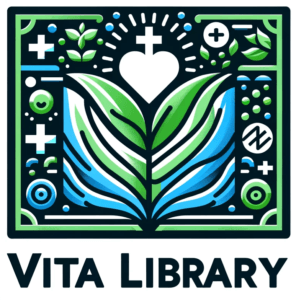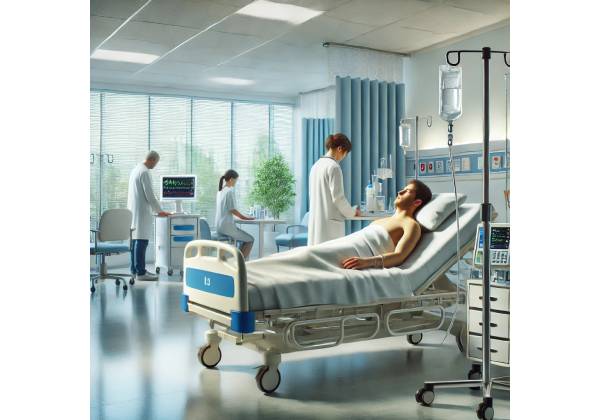Shaking hands are unsettling; full-blown hallucinations and crashing blood pressure can be deadly. Delirium tremens (DTs) is the most dangerous form of alcohol-withdrawal syndrome, arising when heavy drinkers stop or sharply cut back. Within 48–96 hours the brain, long sedated by ethanol, rebounds into electrical chaos: fever, confusion, seizures, and cardiovascular collapse. Although modern medicine can curb the fatality rate below 5 %, delayed recognition still kills thousands each year. Knowing who is at risk, how to spot the earliest warning signs, and which intensive treatments save lives turns a medical emergency into a survivable crisis—and a gateway to lasting sobriety.
Table of Contents
- Scope, Mortality Trends, and Hospital Statistics
- Neurochemical Upheaval and Predisposing Conditions
- Clinical Manifestations, Red Flags, and Bedside Assessment
- Systemic Complications, Long-Term Impact, and Psychosocial Strain
- Acute Management Protocols and Sustained Recovery Pathways
- Frequently Asked Questions
Scope, Mortality Trends, and Hospital Statistics
Delirium tremens strikes roughly 5 % of patients undergoing alcohol withdrawal, yet it accounts for the vast majority of withdrawal-related fatalities. In the United States alone, emergency departments log more than 50,000 DT-related visits annually; intensive-care admissions have risen 12 % since 2018, paralleling pandemic-era drinking spikes. Rural hospitals report disproportionate case-fatality rates—up to 15 %—owing to limited ICU beds and delayed transfers. Globally, nations with high per-capita spirits consumption (e.g., Russia, parts of Eastern Europe, and South Korea) see DT presentations crowding 10 % of all acute-alcohol admissions.
Age alters risk curves: while the typical DT patient is a man in his 40 s with two decades of heavy use, post-menopausal women now account for one in five cases as hidden “wine-o’clock” habits mature. Comorbidities—liver cirrhosis, chronic pancreatitis, homelessness—further widen the danger zone, pushing healthcare systems to refine screening algorithms and prophylactic protocols.
Neurochemical Upheaval and Predisposing Conditions
Excitation-Inhibition See-Saw
- GABA down, glutamate up – Ethanol is a GABA-A agonist and NMDA antagonist. Chronic exposure makes neurons down-regulate GABA receptors and up-regulate glutamate receptors. Sudden abstinence removes the brake (GABA) but leaves the accelerator (glutamate) floored, triggering neuronal storming.
- Catecholamine surge – Increased norepinephrine and dopamine drive hypertension, tachycardia, and hallucinations.
- Cortisol and cytokines – Withdrawal elevates stress hormones and pro-inflammatory markers, compounding delirium.
Who Tips into DTs?
| Risk Factor | Mechanism |
|---|---|
| History of previous DT or withdrawal seizure | Indicates primed neuro-adaptation; future episodes often earlier and harsher. |
| Very high BAC at admission (>300 mg/dL) | Suggests severe dependence; metabolising to zero unravels adaptation. |
| Electrolyte derangements (low Mg, K, phosphate) | Destabilise neuronal membranes, lowering seizure threshold. |
| Concomitant illness – pneumonia, pancreatitis, trauma | Heightened metabolic stress amplifies autonomic instability. |
| Older age & comorbid liver disease | Reduced hepatic metabolism of excitatory amino acids; impaired thiamine storage. |
Thiamine deficiency deserves special mention: chronic alcoholics exhaust hepatic stores, setting the stage for Wernicke–Korsakoff syndrome if glucose is given first in the ED. Early parenteral thiamine is thus lifesaving and delirium-preventive.
Clinical Manifestations, Red Flags, and Bedside Assessment
Time-Course Landmarks
- 6–24 h after last drink – Tremor, anxiety, nausea, mild tachycardia.
- 24–48 h – Early hallucinations (visual, tactile), diaphoresis, hypertension.
- 48–96 h – DT window: profound confusion, disorientation, agitation, seizure clusters, high-grade fever.
Classic Symptom Cluster
- Autonomic overdrive – Pulse > 120, systolic BP > 160 mmHg, profuse sweating.
- Altered sensorium – Fluctuating attention, vivid nightmares spilling into wakefulness, misrecognition of caregivers.
- Motor disturbances – Severe tremors, myoclonus, “picking” behaviour at bedding (formication).
- Seizures – Generalised tonic-clonic, often multiple.
- Cardiovascular collapse – Dysrhythmias, volume depletion, hyperthermia.
Bedside Tools
- CIWA-Ar (Clinical Institute Withdrawal Assessment for Alcohol) – Score ≥ 20 flags severe withdrawal; however, once delirium sets in, CIWA underestimates severity because it requires patient report.
- MINDS (Minnesota Detoxification Scale) – Incorporates vital signs and agitation, better for ICU.
- Benzodiazepine “front-loading” test – Lack of symptom relief after 10–20 mg diazepam suggests impending DTs necessitating ICU transfer and continuous infusions.
Laboratory adjuncts include electrolyte panels, magnesium, phosphate, liver enzymes, CBC, and blood cultures to uncover infections masquerading as or compounding delirium.
Systemic Complications, Long-Term Impact, and Psychosocial Strain
Medical Dominoes
- Rhabdomyolysis – Agitated muscle activity plus fever breaks down skeletal tissue, leading to acute kidney injury.
- Aspiration pneumonia – Seizures and impaired gag reflex allow gastric contents into lungs.
- Cardiac arrhythmias – Hypokalaemia and catecholamine surge produce atrial fibrillation, ventricular tachycardia.
- Cerebral oedema – Severe hyperthermia and hyponatraemia risk brain swelling and herniation.
Neurological & Cognitive Aftermath
Even survivors can suffer lingering deficits: impaired working memory, executive dysfunction, and slowed processing speed. These changes complicate adherence to sobriety plans and heighten relapse odds if unaddressed.
Psychosocial Ripple Effects
- Employment loss – ICU stays span 3–10 days; many patients lack sick leave.
- Family trauma – Witnessing hallucinations and near-death fosters caregiver PTSD and codependency.
- Financial burden – Average U.S. DT ICU bill exceeds \$25 000, frequently out of pocket for under-insured populations.
Holistic recovery must therefore integrate neurocognitive rehab, social-services navigation, and family counselling.
Acute Management Protocols and Sustained Recovery Pathways
1. Resuscitate & Stabilise
- Airway protection – Early intubation for uncontrolled agitation or repeated seizures.
- Fluid resuscitation – Correct hypovolaemia; avoid glucose until thiamine (500 mg IV) is administered.
- Electrolyte repletion – Aggressive Mg, K, phosphate replacement reduces arrhythmias and seizure frequency.
- Temperature control – Cooling blankets and antipyretics for fevers > 38.5 °C.
2. Benzodiazepine Backbone
| Drug | Loading strategy | Monitoring |
|---|---|---|
| Diazepam | 10–20 mg IV every 5–10 min until lightly sedated | Rapid onset, long half-life; watch respiratory rate. |
| Lorazepam | 4 mg IV every 10–15 min | Safer in liver failure; may require continuous infusion. |
| Midazolam | Continuous infusion in ventilated patients | Short half-life; useful for fine titration. |
Refractory cases benefit from adjuncts: phenobarbital, dexmedetomidine, or propofol (if intubated).
3. Multidisciplinary ICU Care
- Delirium bundles – Re-orientation cues, day-night lighting, earplugs, early mobility as sedation lifts.
- Thromboprophylaxis – LMWH once bleeding risk controlled.
- Nutrition – High-calorie, high-protein enteral feeds; monitor for refeeding syndrome.
4. Transition to Medical Ward
Benzodiazepines tapered over 3–5 days. Gabapentin or carbamazepine may cover lingering withdrawal and improve sleep.
5. Relapse-Prevention Toolkit
| Modality | Action Points |
|---|---|
| Medication-assisted treatment | Naltrexone, acamprosate, or disulfiram based on liver profile and adherence likelihood. |
| Cognitive-behavioural therapy | Identify triggers, restructure thoughts, develop coping skills. |
| Mutual-help groups | AA, SMART Recovery, or culturally specific peer networks. |
| Family systems therapy | Address enabling patterns, rebuild trust, teach relapse warning signs. |
| Neurocognitive rehab | Computerised brain training and occupational therapy for executive deficits. |
| Social determinants | Connect to housing, employment assistance, and legal aid when relevant. |
6. After-care Metrics
- 30-day readmission – Target < 10 % via outpatient follow-ups within one week.
- 6-month continuous abstinence – Benchmarked at 40 % for programmes blending MAT and CBT; lower when either component missing.
- Quality-of-life indices – WHOQOL scores should trend upward; cognitive testing repeated at 3 and 12 months.
Early, aggressive medical treatment coupled with personalised recovery planning shifts DTs from a 19th-century killer into a critical but conquerable turning point.
Frequently Asked Questions
How is delirium tremens different from “the shakes”?
“The shakes” describe mild alcohol withdrawal—tremor, anxiety, sweating—usually starting within 12 hours. DTs emerge later (48–96 h) with severe confusion, hallucinations, fever, and life-threatening autonomic instability.
Can DTs start while blood alcohol is still detectable?
Yes. Heavy drinkers can enter withdrawal even with BAC 100–200 mg/dL because their neuroadaptation expects much higher levels. Decline, not absolute zero, triggers symptoms.
Are seizures mandatory for a DT diagnosis?
No. Up to one-third of DT cases present without seizures yet still have dangerous delirium, hypertension, and fever.
Why give thiamine before glucose?
Glucose metabolism consumes thiamine; deficient patients risk precipitating Wernicke’s encephalopathy—ocular palsies, ataxia, confusion—if glucose is infused first.
How long does delirium tremens last?
With proper ICU care, acute delirium resolves in 3–5 days. Cognitive fog and sleep disruption may persist for weeks.
Is outpatient alcohol detox safe?
Only for low-risk individuals (CIWA < 10, no history of DTs or seizures, good support). Anyone with past severe withdrawal or major comorbidities should detox in hospital.
Disclaimer
This article is for educational purposes only and does not replace professional medical advice. If you or someone you know is experiencing severe alcohol withdrawal, seek emergency medical care immediately.
If you found this guide helpful, please share it on Facebook, X (formerly Twitter), or your favourite platform, and follow us for more evidence-based health articles. Your support helps us keep producing high-quality content—thank you!












